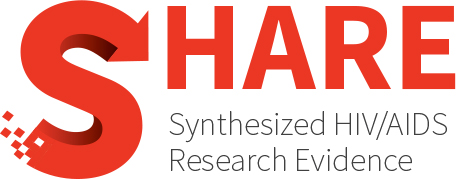Reducing the risk of HIV/AIDS transmission using intervention mapping: A systematic review
Abstract
Intervention mapping (IM) is a planning approach that reflects the intricate decision-making process involved in the design of behavior interventions. The development and implementation of IM is complex in preventing HIV/AIDS transmission. Therefore, it is significant to conduct a perfect preliminary work to successfully implement HIV/AIDS prevention. The objectives of this review were to collect and evaluate the data of the first three steps using IM to prevent HIV/AIDS transmission, and summarize the key points in the preliminary steps of IM. A total of 18 studies were identified, and six studies completely described the tasks in the first three steps of IM. Three studies described the logic model of the problem (n = 3). Six studies reported the matrix of behavior changes (n = 6), including personal and environmental determinants. Among the selected determinants, most studies reported the personal level determinants (self-efficacy and skills, knowledge, attitudes, and norms). The most used practical applications in reducing HIV/AIDS risk behaviors were video roles (n = 8) and role-model stories (n = 5). The review may be helpful for healthcare professionals to carefully design and implement the key procedures of the first three steps of the IM programs for people with HIV/AIDS in preventing HIV/AIDS transmission.
Authors
Chen J, Liu W, Chen J, Ma C
Year
2024
Topics
- Epidemiology and Determinants of Health
- Determinants of Health
- Determinants of Health
- Income
- Education
- Social support
- Health services
- Stigma/discrimination
- Population(s)
- General HIV- population
- Prevention, Engagement and Care Cascade
- Engagement and Care Cascade
- Prevention
- Engagement and Care Cascade
- Linkage/engagement in care
- Retention in care
- Treatment
- Prevention
- Education/media campaigns
- Testing
- Testing
- Health Systems
- Delivery arrangements
